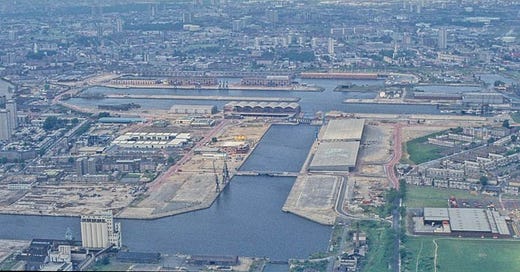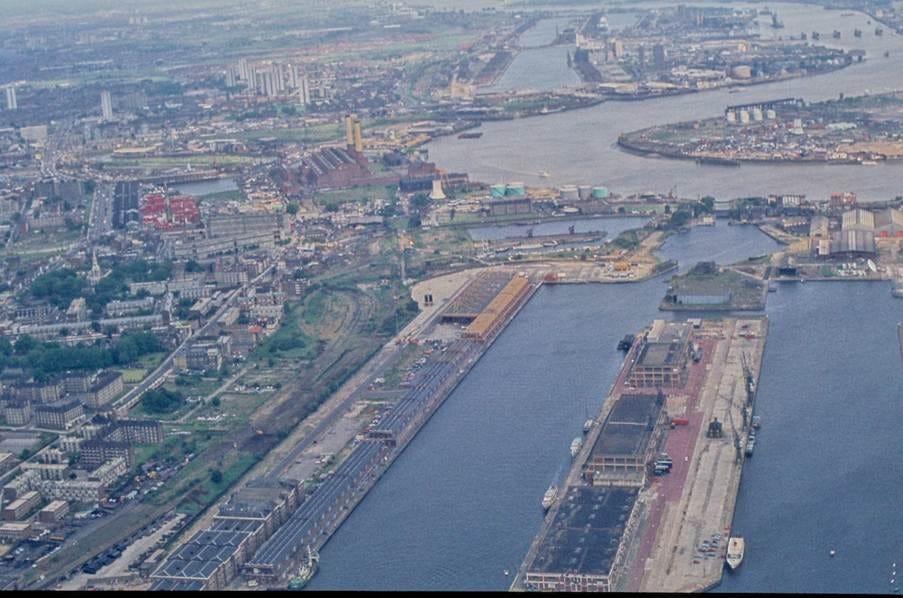[A post about the London Docklands. Another on glaciation in the Lake District will follow next week.
However, over the last few days we have seen the devastating earthquake that has struck Myanmar and Thailand. You will find an excellent account (on Substack) of the geological background to the event here.
You can also find an excellent summary of the event, with video extracts, on Alistair Hamill’s BlueSky account here.]
I have often advocated the use of the Substack app. One of the reasons for this is that you have easy access to the hundreds of other Substacks that exist. One of these is the excellent, and very interesting, Substack of Matt Brown – Londonist: Time Machine. If you are a fan of London, and its historical and cultural growth and development, then I strongly recommend following and subscribing to Matt’s Substack (there is a free version).
Recently, he posted two posts that have examined the changes in central London that have taken place since 1984 using aerial photographs (I have provided the links to his posts at the end). His Substack tells the story behind these photos, which I encourage you to read, but he has kindly given me permission to re-publish 4 of his photos. These photos relate to the area we now know as the London Docklands – perhaps the most well-known and most studied urban regeneration scheme in the UK. As I have noted to Matt, potentially hundreds of thousands of GCSE and A level Geography students have studied, and may be still studying, this area.
In each case, an area is shown in 1984. Then, Matt has recreated the same area, from the same perspective by using Google Earth. In my view, these are superb photos for studying this Changing Place.
Finally, I referred to Canary Wharf in the introduction to a piece I wrote recently for Geography Review on the changes in the urban environment during the 2020’s:
In March 2024, the then Chancellor of the Exchequer, Jeremy Hunt, announced a £240 million ‘levelling-up’ fund for an area including Canary Wharf in east London – the home of some of the world’s biggest, and richest, banks and offices. Previously, in November 2023, two large investors in the global city-office sector announced significant changes to their financial health. Firstly, Lord Alan Sugar, the star of the BBC reality series The Apprentice which shows Canary Wharf in the opening title sequence, announced that his holding company Amshold, the group through which he holds his London-based property investments, had made a loss of £29 million in the year up to June 2023 (compared to a £15 million pre-tax profit in 2022). Secondly, the co-working city-office space provider WeWork, which has its headquarters in New York, USA, filed for bankruptcy. At its height, WeWork operated in 39 countries, with over 750 work-sharing locations world-wide. The American news network, ABC, described the demise of WeWork as being emblematic of the ‘excesses of business start-up culture’.
What were the reasons for these events, and how symptomatic of the changes to city centre retail and office spaces in the future are they?
I will publish the rest of the article here in the coming months. But, first, the photos….
Photo 1. Canary Wharf area 1984
Photo 2. Canary Wharf 2024/5
Photo 3. West India Dock and the Greenwich Peninsula 1984
Photo 3. West India Dock and the Greenwich Peninsula 2024/25
Here are the links to the original posts – and once more, my thanks to Matt.








Thanks for the kind words, David.
Hey David, this is a really interesting content. Hope I find time for the rest of your content. Do check out my page. Dropping a direct link to my latest post here….https://substack.com/@keerthanapriya/note/c-105618050